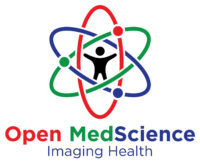Staying current on the newest developments in nursing trends and best practices is imperative, given the growing competitiveness in the healthcare industry. Nurses have to be knowledgeable and flexible as patients’ needs change and new study modifies clinical standards. Professional development and work fulfilment depend on it, in addition to delivering excellent care.
Driving forces in nursing practice are constantly developing concerning policy changes, technology, public health demands, and evidence-based practice. Today’s nurses are better able to express patients’ worries, adapt to fresh techniques, and contribute to a more robust healthcare system overall. Below are six practical ways of keeping current with nursing trends and best practices.
1. Attend Professional Conferences
Professional nursing meetings are among the best opportunities for nurses to locate the most recent developments and studies. Sometimes, medical champions, teachers, and experts from across the country and even globally meet at conferences. Learning and socialising here are done in an interactive environment.
Conference programs often include hands-on workshops and breakout sessions focused on particular areas of practice in addition to keynotes. Nurses can enhance their knowledge and return to work with valuable insights that are most relevant to their work. Conferences are one easy way to get continuing education units (CEUs) to maintain your licensure.
Networking is also yet another significant benefit of going to conferences. By interacting with colleagues from different backgrounds worldwide, nurses are exposed to fresh concepts and solutions. Mentorship, employment, and lifetime professional advice are all products of these relationships.
2. Get Peer-Reviewed Journals
Keeping abreast with evidence-based practice depends critically on reading peer-reviewed nursing journals. These journals, such as The American Journal of Nursing, Nursing Research, and Journal of Advanced Nursing, perform advanced studies, clinical trials, and scholarly review articles. These journals carry fact-based information that nurses in the workplace can implement.
Nurses are pushed to analyse their current clinical habits via daily reading logs. A study could find out that an often-used, routinely practised therapy is no longer the best option. Based on this knowledge, a nurse can seek for change to be implemented or begin a quality improvement project in their division.
Electronic subscription makes it simpler than ever to access journals on the go. Others provide article abstracts, video abstracts, and app-based alerts so busy nurses may stay current without becoming overburdened. More knowledgeable and proficient practice can come from making a regular reading of journals part of a weekly schedule.
3. Value Progressive Learning
Especially with the increasing intricacy of medicine, ongoing education is a natural component of nursing philosophy. Progressive education is about never stopping looking for new degrees and certifications that match your career aspirations and patient needs. This might involve enrolling in specialised, quality courses that will hone skills more.
Pursuing MSN online programs nurse practitioner paths is among the choices supporting progressive learning. They let nurses work and study concurrently, dedicating available time to advanced courses and developing clinical and leadership abilities. Speciality care-oriented MSN programs help nurses stay abreast of new diagnoses, therapy, and patient advocacy developments.
4. Join Professional Organisations
The direct path to the present trends in nursing is membership in professional nursing organisations. Groups like the American Nurses Association (ANA), the National League for Nursing (NLN), and specialised-based societies offer abundant resources, position papers, kits, and continuing education.
Usually, the ability to review advanced newsletters, research briefs, and advocacy materials requires membership. Nurses with policy news, legislative initiatives, and current best practice knowledge can find these resources helpful.
Furthermore, helping members feel a sense of community and shared purpose is a professional group affiliation. Most companies provide leadership training as well. As a mentor to new nurses or committee members, active participation improves professional ability while aiding the whole nursing industry.
5. Identify Thought Leaders and Trust Sources
Engaging with famous nurse thought leaders, clinical experts, and hospitals can provide real-time information and fresh insight into career change. Learn resources abound on websites, including LinkedIn, Twitter, and YouTube. Nursing teachers, for example, usually presented bite-sized chunks of recent research breakthroughs or policy changes.
Still, it’s critical to confirm the authenticity of sources. Not all internet material is scientifically relevant or evidence-based. Nurses should emphasise the importance of following board-certified professionals, colleges, and trustworthy health groups instead. This confirms that information acquired is accurate and relevant to clinical practice.
6. Embrace Interdisciplinary Practice
Collaborating with other medical experts may highlight new techniques and approaches. Inter-professional cooperation can grow increasingly crucial in delivering coordinated, patient-centred care. Nurses who engage in cross-disciplinary discussions with doctors, pharmacists, social workers, and therapists can be motivated regarding comprehensive care.
Team learning environments encourage continuous education and cooperation. One instance is when a pharmacist teaches a nurse a pain treatment or even observes a fresh communication approach from a case manager. These situations are settings where the nurse’s work is affected and enhanced.
Conclusion
Staying current on nursing trends and best practices will enable you to provide evidence-based, high-quality care. Nurses can enhance their competencies through education, networking, and cross-professional development to remain in good standing in a changing profession. Nurses can lead courageously and enhance patient outcomes by empowering themselves through ongoing learning.
Disclaimer
The content of this article is intended for general informational purposes only and does not constitute professional medical, legal, or educational advice. While every effort has been made to ensure the accuracy and reliability of the information provided, Open MedScience makes no guarantees regarding its completeness, timeliness, or applicability to individual circumstances. Readers should always consult their institution’s policies, a qualified healthcare professional, or a relevant authority before making decisions based on this material. Any references to organisations, products, or services do not imply endorsement. Open MedScience accepts no liability for any actions taken or omitted based on the information in this publication.




